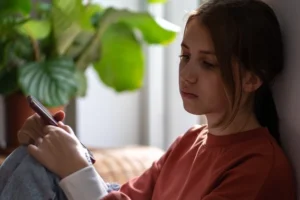The legal and life tech – lessons every parent should know about
The story of the 14-year-old boy being investigated by police for sending a naked picture – or sext – of himself to a classmate has made headlines all across Britain.
People called into question whether the police should have investigated at all.
The craze for sexting and image sharing, particularly among teenagers via Snapchat, is a massive issue for parents.
This boy is among thousands who’ve done this and may have seen it as a harmless activity.
How can sexting affect children?
As well as damaging friendships, reputations and lives, it is ultimately illegal.
When children engage in sexting, they’re creating an indecent image of a person under 18. Even though the image is of themselves, it’s against the law – as is distributing that image.
The proliferation of connected devices means there’s more opportunity for sharing, sending and shocking at the touch of a button, and images can now easily be shared among peer groups, leading to embarrassment, harassment and, in some cases, even blackmail.
Although rare in cases like this, police may feel obliged to investigate.
What parents do to help their child
We see it as a parent or carer’s job to have very frank conversations about sexting with their children and how sharing images like this can have a long-lasting impact on a child’s self-esteem.
At the heart of the solution is education. Parents need to be more aligned to their children’s digital activity so they can advise, educate and support on the pros and cons of the connected world.
Just as in the physical world, parents need to be aware of their children’s digital behaviour and manage the situation appropriately.
When we talk to parents we tell them about the Billboard Test – would you be happy to see a photo you have shared on a billboard? If the answer is ‘no’, then don’t send it.
As well as the National Crime Agency’s Thinkuknow educational films, Internet Matters also has advice on how parents can deal with this issue.




